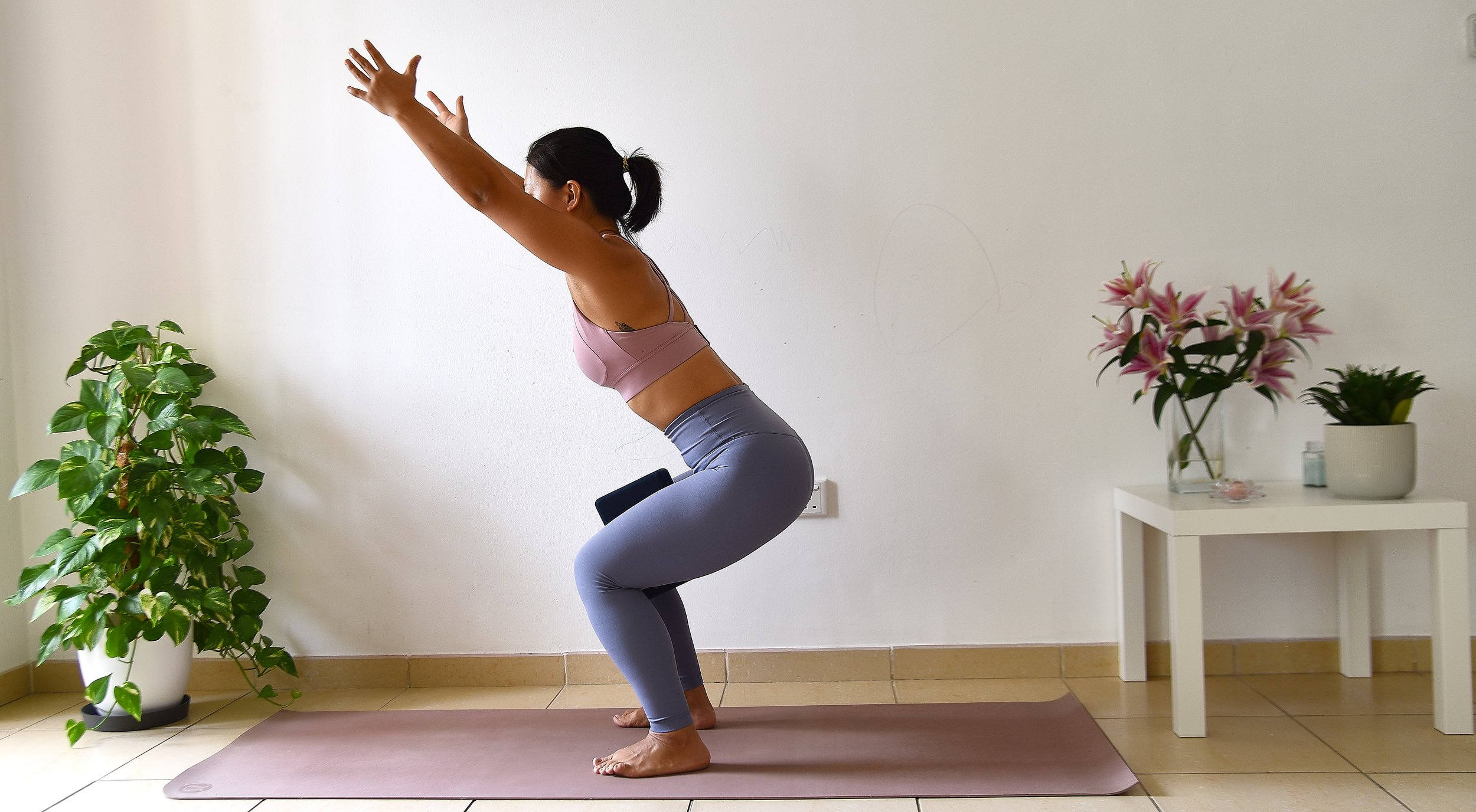5 Easy Ways To Use Yoga Blocks To Enhance Your Yoga Poses
Yoga provides many props to enhance your ability to express a yoga pose. One of the most popular yoga props to use in class is the yoga block. Made from foam, bamboo, wood or cork, the block is often used as an extension of the arms, but can also support the back, head and hips to help the body settle into a pose. Whether you are seated or standing, or have tight hips and shoulders, the following five poses are excellent examples of using a yoga block to enhance flexibility and find greater enjoyment in your yoga practice.
1. Yoga blocks support range of motion, thereby shortening the distance between you and the floor (“bringing the floor closer to you”)
Ardha Chandrasana or Half-Moon Pose
How: Position the yoga block 6-12 inches in front of the standing foot, slightly to the outside and on the highest height level. From a high-lunge position with the right foot forward, place your hand on the block and use the block to extend up and out of the shoulder while stepping into the right foot and straightening the right leg. Lift the left leg up parallel to the floor. Roll the left hip up and back and turn the whole torso so that the entire front of the body is facing the sidewall.
Why: The block shortens the distance between the hand and the supporting surface (in a sense, it lifts up the floor to meet your hand), making it easier to lift your torso, expand through the chest and keep your upper body in alignment without collapsing into the side body. When using the block to aid in balance, you’ll be able to slowly open the hips and reap the benefits of strong ankles, knees, legs and mental focus.
2. Yoga blocks assist in establishing correct alignment
Utthita Trikonasana or Extended Triangle Pose
How: From Warrior II(Right side), position the yoga block on the inside of your right foot(any height). Straighten your front leg. Engage your right thigh muscles and draw your right femur into its socket. Extend your right hand toward the front of the room, keeping your right hip tucked. Lower your right hand down onto the yoga block. The left shoulder stacks on top of the right one as you open your chest, reaching your left fingertips toward the ceiling while keeping your left shoulder rooted in its socket. Gaze up toward your left fingertips. If this is uncomfortable for your neck, keep the head in a more neutral position. Continue to draw your right thigh muscles upward, deepening the crease in your right hip. Soften your right knee slightly to prevent hyperextension (this is called a micro-bend). Stay for at least 5 breaths. Repeat the pose with your left leg forward.
Why: The block supports your correct alignment and helps you open your chest to enjoy deeper benefits in this pose.
3. Yoga blocks help make yoga accessible to beginners and to those experiencing injury or other physical limitations.
Virasana or Hero’s Pose
How: Kneel with your knees and feet hip-distance apart. Place the block(s) between your shins on low height level. If needed, you can stack two blocks together. Slowly shift your body back and sit on top of the block(s). Lengthen the spine, gently engage the core, and keep length in the back of the neck. Place palms on top of the thighs.
Why: Lifting the hips above the level of your knees reduces knee stress and discomfort, making it easier for you to sit in this position to reap the benefits of stretching the feet, ankles and thighs.
4. Yoga blocks bring awareness to properly engage and support muscles in a specific pose
Utkatasana or Chair Pose
How: Begin at the top of your mat in Mountain pose. Take your feet apart, check that your toes are pointing forward, and place a yoga block in between your thighs. Bend your knees and sit down low. Inhale and lift your arms up overhead while keeping your hips down low. Take your biceps by your ears and your palms to face each other. Lift your chest up, and relax your shoulders down and away from your ears. Draw your tailbone down towards the mat and draw your belly button in towards your spine to engage your core. Keep your body weight to your heels and squeeze the block tightly with your inner thighs to engage your muscles. Sit low while keeping your upper body open. Stay for 5 breaths.
Why: The block brings awareness to your inner thighs to engage your muscles properly.
5. Yoga blocks can be placed at the low, medium and high positions to accommodate more or less support
Parsvottanasana or Pyramid Pose
How: From Warrior I, straighten your front leg(Right leg in this case), shorten your stance. Place two blocks right in front of you(any height). Adjust your feet to make sure that your hip points are facing towards the front of the mat. Inhale to lengthen the spine. Exhale, bend forward and place your hands on top of the blocks. On each inhale, lengthen the spine. You can even come up to a flat back on the inhales. On each exhale, take the forward bend a little deeper. Keep drawing the right hip back to keep your hips squared. Micro-bend your right knee so it’s not locked. Stay for 3-5 breaths. Repeat on the left side.
Why: The blocks offer great support for balance. It’s important that your hands rest upon something other than your shin.






